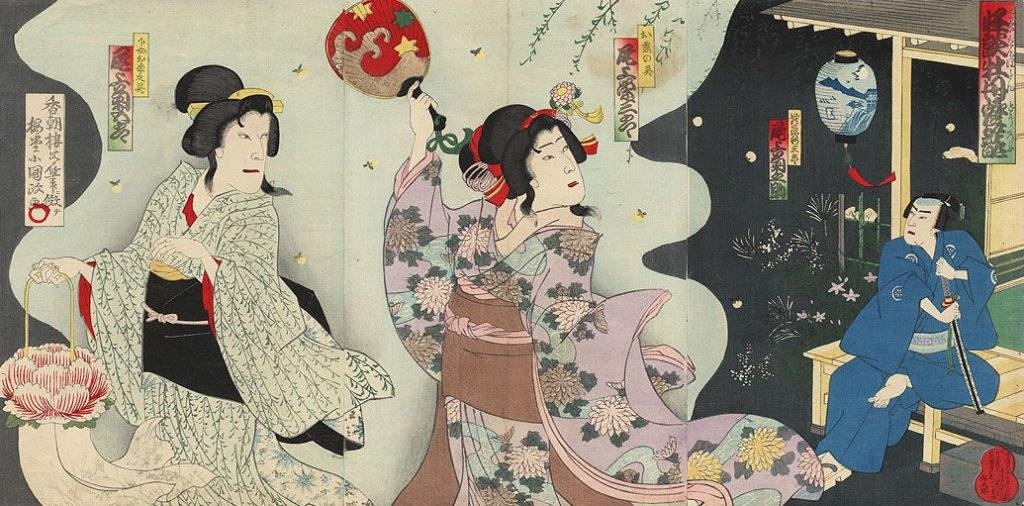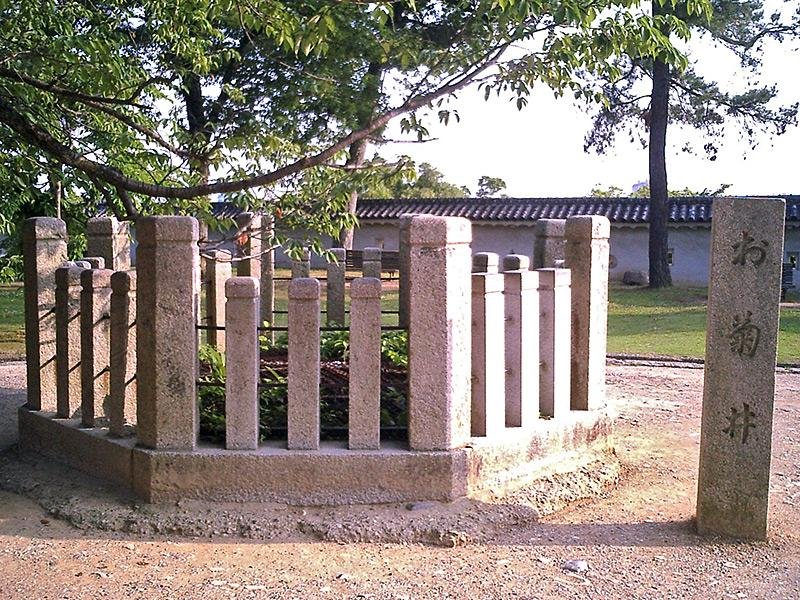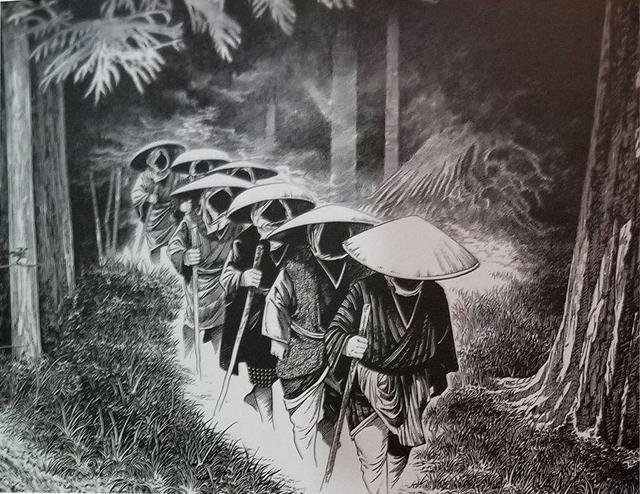Japan is a very spiritual country, where most of its people still believes in the existence of the supernatural. In Japanese culture, it is believed that every living person has a reikon (soul) which either enters purgatory upon their passing, or transforms into a yurei (ghost) if they experienced an unnatural death. Yurei can come in a variety of different forms depending on the circumstances of their death.
Due to these beliefs, the Japanese have plenty of stories and myths surrounding the supernatural, some of which even show up in anime and manga series. Here are some Japanese ghost stories for you to share with scaredy-cats you know this Halloween!
Kuchisake-Onna

Kuchisake-Onna, or the “Slit-Mouthed Woman” is one of the most infamous Japanese ghosts, with many movies and even manga series based on this legend. She is a malicious onryo or vengeful spirit who wears a mask to hide her slit mouth, and she often carries a sharp object with her.
Legend has it that she targets people who she finds attractive, asking them if they think she is beautiful as well. If the victim answers ‘no’, he will immediately be killed. However, if the victim says ‘yes’, she will take off her mask and repeat the question. Consequently, if the victim disagrees, only death awaits them; if they agree, she will cut his mouth to resemble her own.
Hanako-san

Have you ever felt unsettled by using an unfamiliar bathroom or looking into toilet mirrors? It’s a common sensation that might have given rise to the urban legend of Hanako-san or ‘Hanako of the Toilet’, a young female spirit who haunts school restrooms. The story has inspired a number of popular manga and anime series, including the recent hit ‘Jibaku Shounen Hanako-kun’.
While the exact origins of the story aren’t clear, most tellings of the tale describe Hanako-san with a bob haircut and a red skirt. It’s rumoured that if you knock three times on the third stall of a school’s female toilet and ask, ‘Hanako-san, are you there?’, then you might be able to summon her. If she’s present, she’ll answer with ‘Yes, I am’. What happens next usually differs depending on the story being told.
The Peony Lantern

People often say that love can be blinding, and it’s definitely true in this case. The Peony Lantern or Botan Doro is the story of Hagiwara, a samurai who has a chance encounter with a beautiful woman named Otsuyu during Obon, the Japanese festival of the dead. Hagiwara falls deeply in love with her, and the two make plans to meet at his home every night, with Otsuyu leaving every morning before dawn. Unbeknownst to him, however, Otsuyu is actually a ghost.
One night, a neighbour who is suspicious of Otsuyu peeks into Hagiwara’s house, only to find him embracing a skeleton. Hagiwara is shocked to learn of the news, and places a protective charm on his house to prevent Otsuyu from entering. That night, Otsuyu calls to him over and over until he is unable to resist, and he ends up leaving his house to greet her. The next morning, Hagiwara’s dead body is found still entwined with the woman’s skeleton.
The story of the Peony Lantern originates from a Chinese folk tale named Jiandeng Xinhua. However, the Japanese variation of the tale has taken on a life of its own, being a popular subject in traditional Japanese theatre, from kabuki plays to rakugo performances.
Okiku

The subject of a popular bunraku (traditional Japanese puppet theatre) titled Bancho Sarayashiki, Okiku was a servant for a samurai named Aoyama. Due to her refusal to become his mistress, Aoyama accused her of stealing one of ten heirloom plates. Okiku counted the plates over and over in hopes of finding the missing plate, only to realize her efforts were in vain. Aoyama offered to cover up for Okiku if she agreed to marry him, but to no avail. Enraged, the samurai killed Okiku and threw her body into a well.
According to popular folklore, Okiku became an onryo and began to haunt Himeji Castle after the tragedy. Some say her voice could be heard from the castle well, either crying or screeching while counting plates from 1 to 9. This torment continued until a priest came and shouted 10, reliving Okiku from her devastation. Today, the well that people believed she was thrown into still stands, and people can even pay it a visit while exploring Himeji Castle.
Shichinin Misaki

Shichinin Misaki is the name of group of seven ghosts who travel together and are often seen near bodies of water, such as the sea, lakes, and rivers. While ‘shichinin’ translates to ‘seven people’, ‘misaki’ doesn’t have a fixed definition. It is said that anyone who comes across the group will die shortly after due to high fever. The belief behind this is that the victim will replace one of the seven members, who will then successfully pass on.
Much like other myths, different sources tell a different story surrounding the Shichinin Misaki, with the Tosa Province (now known as Kochi Prefecture) having the most well-known version of the story. Despite their reputation as vengeful spirits, they show up in various anime and manga series about the supernatural, such as the classic GeGeGe no Kitaro by Shigure Mizuki.
Though these stories often portray spirits as wicked beings, not all of them have ill intentions, as some Japanese spirits are often said to save people from facing tragic incidents. Regardless, these scary stories can also give us an interesting glimpse into Japanese history and traditions.
Do you know any ghost stories from other cultures? Share them with us in the comments!












